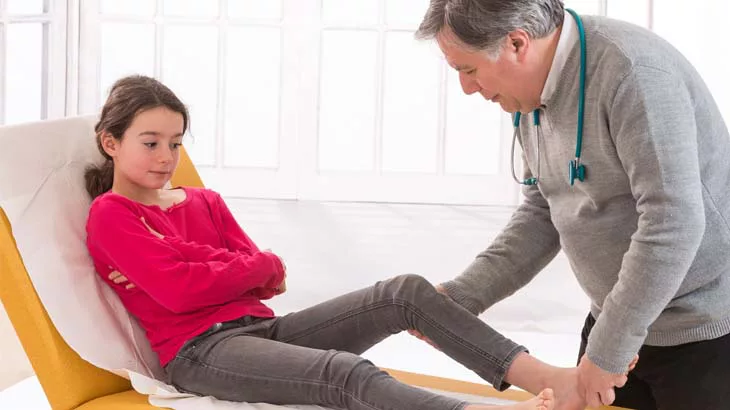4 common orthopaedic problems in children
November 7, 2016
Every child’s growth varies depending on certain factors such as physical, environmental, and more. Sometimes, as a parent, you may notice that your child’s growth is not completely on the right track. There are many children who face Orthopaedic problems such as flat feet, pigeon toes, bowlegs, toe walking, and knock-knees.
Here below are a few common Orthopaedics problems in children which parents must know.
- Flatfeet: This is one of the most common Orthopaedic problems in children. Numerous babies are born with flat feet every day and develop arches in their feet as they grow. However, in some children, the arches never really develop. Most parents notice this because their child is described to have weak ankles due to the way their feet are placed. Sometimes, parents are concerned that having flat feet will make their kids clumsier than others or cause problems as they grow. However, most doctors state that being flat-footed is not a cause for concern and must not interfere with performing daily activities or playing sports or more. In some cases, where a child experiences pain, doctors recommend inserting arch supporters into the shoes, to reduce foot pain.
- In-Toeing or Pigeon Toes: Some babies have a natural turning in of their legs at the approximately 8 to 15 months of age when they begin to stand. As children get older, some parents notice that their child is walking with their feet turned inwards which are known as in-toeing and is often referred to as pigeon toes. Children who usually walk with their toes inward and trip often may have internal tibial torsion, wherein, the lower part of the leg is rotated inwards. Children above the age of 3 or 4 who have in-toeing problems may have a femoral anteversion, wherein, there is a bend in the upper part of the leg, causing it to turn inward. In some children, in-toeing can also be related to an existing medical problem, for example, a cerebral palsy. In-toeing in children does not affect or interfere with ones’ walking, sports and ends as the child grows and develops better muscles and builds control and coordination.
- Bowlegs: Genu varum, commonly known as bow leggedness is a condition, in which, one’s legs bend outwards from the knees downwards. This condition can be inherited as is extremely common in infants and becomes better as the child grows. Bow-leggedness that prolongs beyond the age of 2 years or affects one leg can be a sign of a larger problem, like rickets or Blount disease.
- Knock-Knees: This problem is known as genu valgum and is often referred to as knock-knees. Most children show the tendency towards knock-knees between the age of 3 and 6. This is because the child’s body goes through a natural alignment of changes during this stage. In most cases, treatment is not needed as the legs straighten on their own. However, severe knock-knees or ones that are more towards one side of the leg needs treatment. In some cases, surgery might be considered after a particular age, depending on the health condition of the child.
If you know any child with any Orthopaedic problem it is best to visit a specialist who can treat them well and leave them free from such problems.
NOTICE BOARD
CONTACT US
CONTACT US
 Book Appointment
Book Appointment


.svg)
.svg)
.svg)
.svg)








